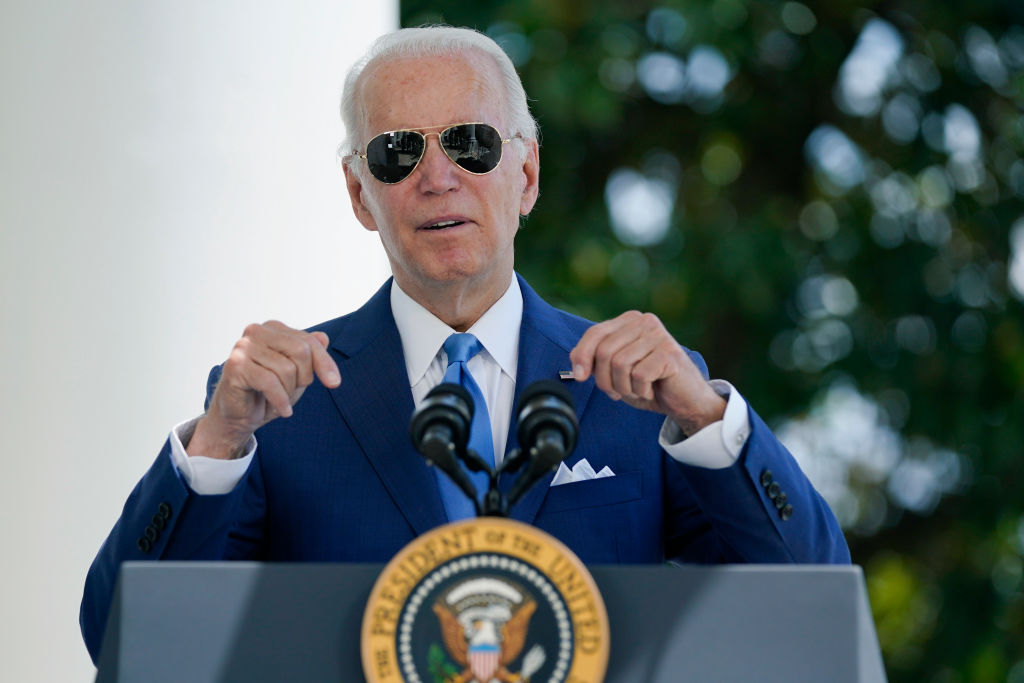
Yesterday on 60 Minutes, in an interview at the auto show in Detroit, Michigan, President Biden stated: “The pandemic is over. We still have a problem with COVID. We’re still doing a lotta work on it. But the pandemic is over.” His pronouncement caught the U.S. public health community, and even some administration officials, off guard. In the hours that followed, science commentators were scrambling to understand the basis for his conclusion that there is no longer a pandemic.
To be fair, as Boghuma Kabisen Titanji, infectious disease physician at Emory, said, “the epidemiology and public health text books don’t really say how one determines when a pandemic has ended.” The end of a pandemic is not like a light switch going off. It is not a discrete moment in time, but more of a process—one that can be messy and highly contested. What President Biden’s declaration suggests is that a pandemic’s “end” is not determined solely by science or public health data, but involves social and political considerations.
The classic definition of a pandemic, from John Last’s A Dictionary of Epidemiology, arguably the “Bible” of public health terminology, is: “an epidemic occurring worldwide, or over a very wide area, crossing international boundaries and usually affecting a large number of people.” By this definition, it would be very difficult to conclude that the COVID-19 pandemic has ended.
Yesterday, 481,326 new cases and 1,789 deaths were reported worldwide. The World Health Organization still categorizes COVID-19 as a pandemic, although its Director General, Tedros Adhanom Ghebreyesus, said last week that “the end is in sight,” noting that daily deaths worldwide are at their lowest level since the pandemic began.
Perhaps President Biden was referring specifically to the U.S.? Yet an analysis last week by CBS News found that U.S. COVID-19 deaths were averaging 478 per day, “higher than in July 2021 when the average was 168 deaths per day and also higher than in June 2022 when the average was 258 deaths per day.”
Read More: You Can Still Long Covid If You’re Vaccinated and Boosted
An average of around 400-500 daily deaths does not indicate an end to the pandemic phase in the US. As I’ve argued before, the US cannot eliminate COVID-19 (elimination means there would be no new cases of the disease within our borders). We also cannot drive deaths down to zero, given that there will always be vulnerable people, especially among older Americans, and while our scientific tools for preventing death—vaccines, antivirals, and monoclonal antibodies—are highly effective, they are not 100% effective. But we certainly can achieve “low endemic levels”—in which there are low levels of severe illness, hospitalization, and deaths, perhaps with seasonal peaks. This scenario is akin to flu, which we strive to keep at low endemic levels, including through flu vaccination. (The CDC estimates that flu killed 12,000-52,000 people a year between 2010 and 2020, which we could drive down further by expanding access to annual flu vaccines.)
Determining when America has transitioned out of the pandemic phase of COVID-19 to a “low endemic” phase would ideally be done through an inclusive, participatory process. Ole Norheim and colleagues at the University of Bergen, Norway have argued that such a process—involving, for example, hearings, town halls, and citizen panels, “can contribute to more trustworthy and legitimate decisions on difficult ethical questions and political trade-offs during the pandemic and beyond.” There would have been less consternation about President Biden’s 60 Minutes interview if he’d brought scientists and the broader public into his deliberations. It is unclear whether President Biden even consulted his own administration colleagues, let alone the wider community, in his determination that the pandemic is done.
But the major problem with the President saying the pandemic is “over” is that it could impede our efforts to reach low endemic levels. For example, Congress is less likely to renew funding for COVID-19 measures if the pandemic has “ended.” And the public may hear the message that COVID-19 is “done” and be less likely to get the new bivalent booster—the first vaccine tailored to the current virus variants. The current US burden of illness, hospitalizations, deaths, and Long Covid can and should be driven down before declaring that “the job is done.” There are many ways in which we can achieve this, including tackling the stark inequity in the U.S. and worldwide in access to vaccines, boosters, and antiviral therapies like Paxlovid and Evusheld. Getting boosters to older Americans is an extremely high priority for averting preventable deaths.
We are not yet at low endemic levels—but these are within our grasp. Only then can we declare the pandemic over. Until then, there is much work to do.
More Must-Reads from TIME
- Donald Trump Is TIME's 2024 Person of the Year
- Why We Chose Trump as Person of the Year
- Is Intermittent Fasting Good or Bad for You?
- The 100 Must-Read Books of 2024
- The 20 Best Christmas TV Episodes
- Column: If Optimism Feels Ridiculous Now, Try Hope
- The Future of Climate Action Is Trade Policy
- Merle Bombardieri Is Helping People Make the Baby Decision
Contact us at letters@time.com